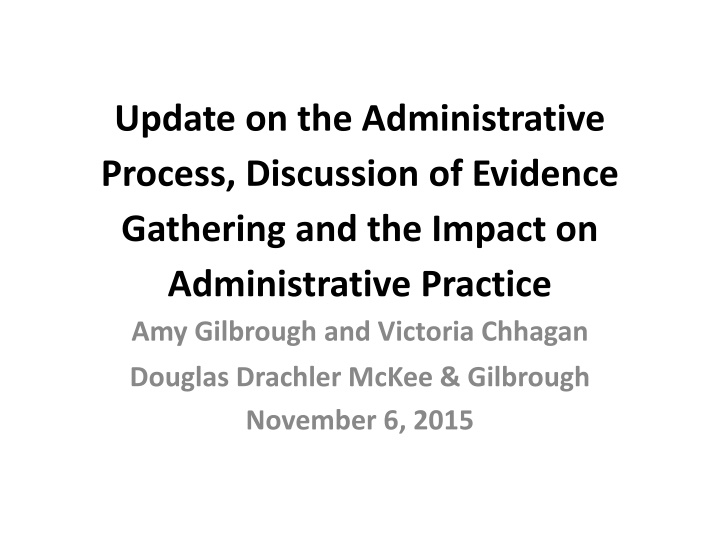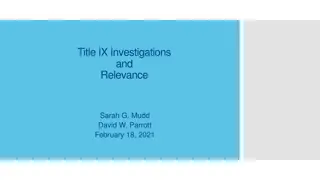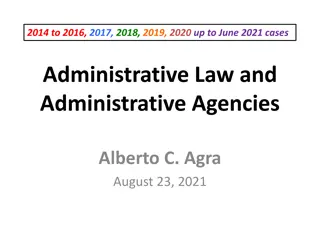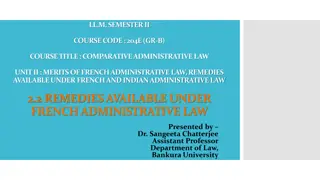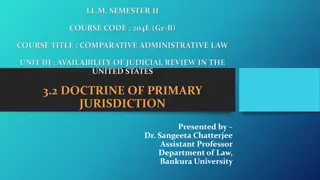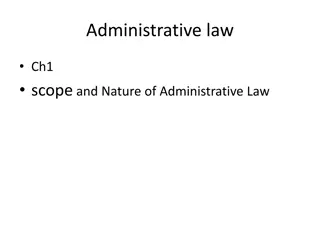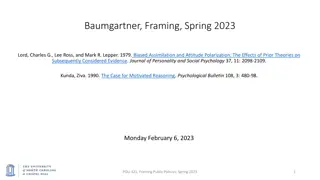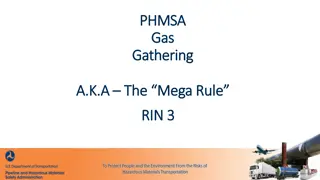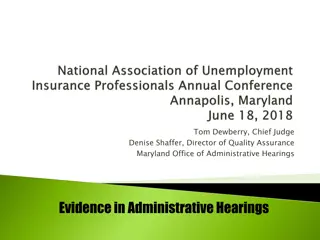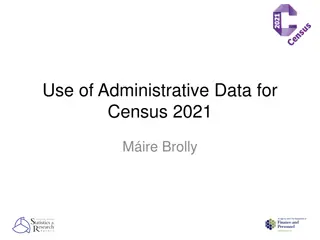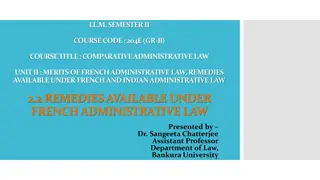Challenges in the Administrative Process: Impact on Evidence Gathering and Decision-Making
Concerns have been raised about the administrative process affecting claimants, with challenges such as increasing processing times, decreasing allowance rates, and fewer hearing decisions being issued. Data shows a decline in favorable decisions at the hearing level and reversal rates at the Appeals Council, as well as longer waits for hearings. These trends highlight the need for a review of the administrative process and its impact on claimants.
Download Presentation

Please find below an Image/Link to download the presentation.
The content on the website is provided AS IS for your information and personal use only. It may not be sold, licensed, or shared on other websites without obtaining consent from the author.If you encounter any issues during the download, it is possible that the publisher has removed the file from their server.
You are allowed to download the files provided on this website for personal or commercial use, subject to the condition that they are used lawfully. All files are the property of their respective owners.
The content on the website is provided AS IS for your information and personal use only. It may not be sold, licensed, or shared on other websites without obtaining consent from the author.
E N D
Presentation Transcript
Update on the Administrative Process, Discussion of Evidence Gathering and the Impact on Administrative Practice Amy Gilbrough and Victoria Chhagan Douglas Drachler McKee & Gilbrough November 6, 2015
Concerns Regarding the Administrative Process and Impact on Claimants Evidence Gathering Throughout the Administrative Process. EAJA Offset. Considering Impacts of Remedy Determinations on Remand Proceedings.
Concerns Regarding the Administrative Process and Impact on Claimants Hearing processing times are increasing. ALJ allowance rates are decreasing. Cases pending more than one year are increasing. Senior attorney advisor fully favorable decisions are decreasing. The number of cases pending per ALJ are increasing. The number of available ALJs is decreasing. NOSSCR Social Security Forum, Volume 36, Number 11, December, 2014.
Decreasing Allowance Rates at the Hearing Level The nation has seen a significant decrease in the percentage of cases granted at the hearing level, from 62% in 2010 to 45% in 2014, a 17% change. Seattle --------- --------- 75% 66% 54% 42% 41% 40% Tacoma ---------- ----------- N/A N/A 53% 60% 63% 59% National 63 63 62 58 52 48 45 N/A FY 2008 FY 2009 FY 2010 FY 2011 FY 2012 FY 2013 FY 2014 FY 2015 The change in rates at the Seattle Hearing office, has been even greater. In FY 2010, claimants in Seattle received favorable decisions on average 75% of the time. That number sank to 40% in 2015; a 35% decrease.
Decreasing Reversal Rates at the Appeals Council In this same period, the Appeals Council Granted Review in a declining number of cases. Year Cases Allowed or Remanded 2008 24% 2009 24% 2010 24% 2011 23% 2012 20% 2013 18% 2014 15%
Fewer Hearing Decisions Are Being Issued in Seattle and Nationwide FY 2010 FY 2011 FY 2012 FY 2013 FY 2014 FY 2015 Received 8593 5329 7607 7835 6562 7660 Dispositions National Decisions 8739 619,887 8900 662,765 7682 668,061 7858 629,337 6175 530,574 5220 N/A
Waits for Hearings Are Increasing In 2010, the average wait time for a hearing was 437 days, or 14.5 months. Because of Commissioner Astrue s initiatives in 2013 the wait reached a low of 317 days, or 10.6 months. Since 2013, the wait time has been climbing. At the end of August, the wait in the Seattle hearing office was 456 days, or 15.2 months. Date Seattle Hearing Office Wait Time (days) 437 391 323 317 362 410 Seattle Hearing Office Wait Time (months) 14.5 13 10.8 10.6 12 13.7 2010 2011 2012 2013 2014 2015
Impact: Claimants Who Are Denied Initially and on Reconsideration Loss of Income for at least a year. Loss of Housing for at least a year. Difficulties Obtaining Medical Treatment. People disabled by psychiatric illness depend on Supplemental Security Income (SSI) and Social Security Disability Insurance (DI) benefits to meet their basic needs. Disability payments provide critical financial support in preventing homelessness among the indigent and contribute to improved outcomes when homeless mentally ill people receive treatment. U.S. Social Security Administration, Office of Policy, available at https://www.ssa.gov/policy/docs/ssb/v67n1/v67n1p53.html.
Impact: Increased Federal Court Filings The Court s Social Security filings have increased 171 percent over the past four years (from 298 in 2010 to 807 in 2013). Pechman, Martha, J., The Rise of Social Security Disability Appeals, Federal Bar Assoc. W.D.Wash., Volume 36, Issue 1, Summer 2014, available at http://www.fba- wdwash.org/newsletters/FBASummer14.pdf. The increase in district court filings may reasonably be linked to a precipitous decline in the number of claims allowed at the hearing and appeals council levels. This increase in disability appeals has been matched by decreasing number of cases being granted at the hearing level as well as decreasing number of denials being reviewed and reversed by the Appeals Council since 2010. The article identified three possible reasons for the explosion in Social Security filings: 1. The EAJA allows attorneys to get paid for fighting a successful Social Security appeal. 2. Social Security decisions are reversed with frequency in this district. 3. States encourage claimants to file for Social Security benefits. While these factors certainly promote applications for and appeals of Social Security benefits, all of these facts have been true since long prior to 2010 and therefore the surge in cases since 2010 cannot reasonably be linked to these factors.
Evidence Gathering Throughout the Administrative Process All Evidence Regulations Effective April 20, 2015, Social Security claimant s were required to: inform [Social Security] about or submit all evidence known to you that relates to your disability claim. 80 FR 14828-38 (March 20, 2015). Consultative Examinations/Medical Experts. Barriers to Developing a Good Administrative Record.
EAJA Offset EAJA belongs to the Plaintiff under Astrue v. Ratliff, 130 S.Ct. 2521 (2010). If an EAJA recipient has child support debt, educational loans, tax debt, or other federal debt, the amount of EAJA is sent to the Department of Treasury to repay the debt, and not to the Plaintiff or her attorney. Number of cases impacted by this is not clear anecdotally 10-15%. Federal Court attorneys and can do check for debt prior to accepting a case on appeal. If EAJA is offset, attorneys will look to fees under 42 U.S.C. 406(b) for payment, if a favorable decision is reached on remand or if the Court orders calculation of benefits.
Considering Impacts of Remedy Determinations on Remand Proceedings. Whether to affirm specific findings, i.e. credibility or rejection of medical opinions. Whether to address all the issues raised where the appropriate remedy is remand. How to give ALJ s leeway in light of new evidence or conditions on remand.
